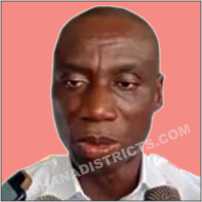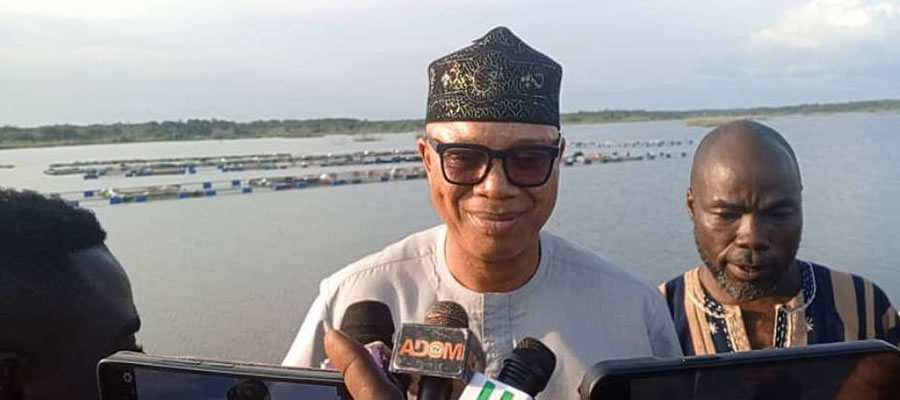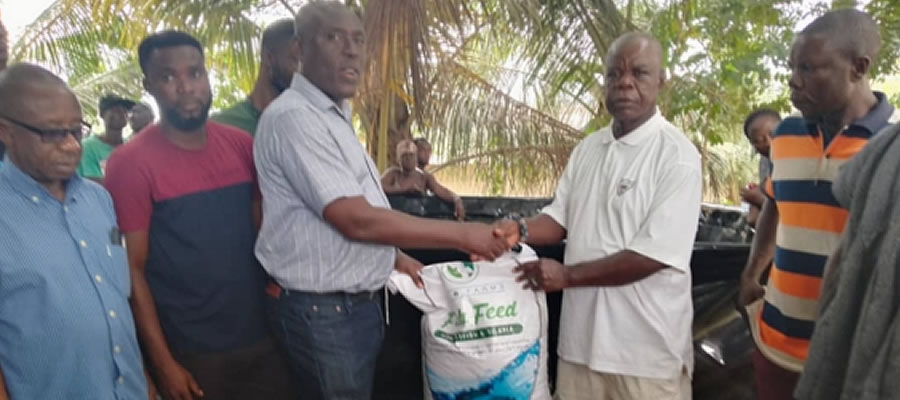

Physical And Natural Environment
This section describes the district regarding its location and size, climate; relief and drainage; vegetation; geology and minerals and soils and discusses how the physical environment has been affected by human activities.
Location And Size
The Gomoa East district is located in the south-eastern part of the Central Region and situated between latitudes 5014’ North and 5035’ North and longitudes 0022 West and 0054’ West. The district is uniquely situated among other districts, bordered on the North East by Agona East district, on the South-West by Gomoa West, on the East by Awutu-Senya District, and on the South by Efutu Municipality whilst the Atlantic Ocean is found to the south eastern part of the district. The district covers an area of 449.63 square kilometres.
Climate
The district experiences two rainfall seasons. The major rainy season is from March/April – June/July while the minor season is from September – November. The main dry season is from November to March and a minor one from mid-July to mid-August. The rainfall is generally low along the coast and gradually increases northward. The rainfall is highly variable with annual total varying from year to year and even monthly totals also vary yearly. However, this pattern is changing with the major rainy season starting late and therefore reducing its duration. Mean annual rainfall currently ranges between 70mm and 90mm in the Southern coastal belt and between 90mm and 110mm in the North-Western semi-deciduous forest areas. Gomoa East has the benefit of experiencing two wind systems; the south-western monsoon winds, whose direction influence the rainfall pattern and the north-eastern trade winds which herald the dry harmattan season. The effects of the harmattan winds are severely felt between January and February.
Relief And Drainage
The district falls within the coastal plains. The relief is highly undulating with a number of hills. It generally rises gently from the coastal south to the north with isolated hills, forest dissected plateau in the north and coastal plains in the south with the Yenku hills forming a broad ridge with a maximum height of 215m. The slopes are generally moderate; but become steep in a few places. The Togo rocks also give rise to hills along the coast at Nyanyano and Fetteh.
The drainage system of the district consists of few rivers and numerous streams. The major ones being the Ayensu and Brushing Rivers which flow into the sea near the Oyibi lagoon near Winneba and the Apaa Lagoon in Apam. Some of the streams found in the district include Nyanya near Nyanyano, Pompon near Fetteh and the Pretu.
Vegetation
The district has two main vegetational zones - the dry coastal savannah and the moist semi-deciduous forest. The coastal savannah consisting of grassland with scattered patches of thickets stretches from Fetteh in the south eastern part of the district to Langma (Dampase) at eastern edge bordering the Ga South district. The moist semi-deciduous forest is mainly found in the northern parts of the district around Afransi, Amoanda, and Lome areas. At the extreme northern and north-western parts near Gomoa Eshiem and Gomoa Takyiman, parts of the vegetation have the semblance of a tropical rain forest. In this part of the district are found most of the cocoa and coffee farms.
The moist semi-deciduous forest is characterised by tall trees, interspersed with grass cover, shrubs and soft woody species. The situation is akin to a tropical rain forest which has been degraded into a secondary forest. As a result of the continuous burning coupled with bad farming practices, the moist semi-deciduous forest is gradually being degraded into secondary/savannah zones. The coastal savannah zone consists mainly of grasslands with scattered thicket of shrubs of different species dominated by the neem tree. Two prominent forest vegetation belts exist in the district, namely, the Yenku forest reserve and the Yenku afforestation belt. Both are characterised by tall trees which are mostly evergreen throughout the year. These two belts/reserves are located between the Brushing and Pretu rivers which together form a potential agriculture zone of the district.
Geology And Minerals
The district overlies the upper Birimaim, lower Birimain, Cape Coast granite rocks and Foso series. These granite rocks form the basis for the high potential of quarry stones mined around Gomoa Assin, Gomoa Fetteh Kakraba and Ojobi areas. The Birimaim rocks which form the basis of illumine, zircon and monazite are found to the western part of the district.
Soils And Agricultural Landuse
The parent materials from which the soils found in the district are granites, upper Birimian rocks, and sandstone and river alluvium. These can be further categorised mainly into four soils namely; the forest ochrosols and oxysols intergrades, tropical black earth and forest lithosols. The forest ochrosols has a high nutrient value and is suitable for both tree and food crops, including cocoa, coffee, citrus, maize, cassava, pineapple and vegetables.
The forest ochrosols and oxysols intergrades have lesser nutrients compared with the forest ochrosols but have similar texture. This type of soil also supports tree crops such as cocoa and all food crops.The tropical black earth mainly found along the coastal areas and lagoons, is thick, sticky and dark in colour containing a mixture of a high percentage of magnesium, calcium and lime. During the rainy season, these soils become thick and sticky but become compact and hard and crack up during the dry periods. These soils are potentially suitable for the cultivation of rice, cotton and sugar cane especially under artificial irrigation.
The forest lithosols are also referred to as rocky soils due to the underlying hard pan and making it poor in nutrient value. However, they can support the cultivation of vegetables. Crops such as sugar cane, maize and pineapple are also grown along the valleys. These soils cover a wide area of the savannah belt of the district. In view of the nature of the physical and natural environment described above, the people of the district are mainly engaged in farming and fishing for their livelihoods.
The seasonal nature of economic activities namely fishing and faming has contributed immensely to the poverty situation in the district. This has greatly fuelled the seasonal migration of the people especially the youth to other districts in search of sustainable livelihoods. It is therefore imperative for alternative livelihood programmes to be pursued vigorously in an effort to reduce poverty in the district. The presence of the Millennium Challenge Account (MCA) programme also presents an opportunity for the potentials of the district especially its low lying nature of the topography to be tapped.
Impact of Human Activities
Among the natural resources found in the district include rivers, streams, lagoons, beaches, forest reserves, quarry stones and traces of mineral deposits. However, inappropriate farming practices (i.e. slash and burn, shifting cultivation), group hunting, bush fires and logging activities occurring especially in the semi forested areas have become the major threats to the district’s vegetation and other natural resources. Degradation of vegetation results in soil infertility in the farming areas, soil erosion and its associated environmental problems.
Currently, there are efforts by government agencies such as MOFA, ADRA and NADMO in some selected communities to restore the vegetative cover and eventually improve the fertility of the soil. The nature of the soil at Fetteh, Nyanyano and Budumburam favours sand-winning activities. However, the unregulated activities of the sand winners have led to serious land degradation thus affecting other important infrastructure such as newly constructed roads in these areas. Gold mining and quarrying activities in the district are also contributing seriously to environmental problems including major cracks in houses and buildings in certain places.
Disaster Situation
Conditions of the Natural Environment and Disaster-Prone Areas
The condition of the Natural Environment is a typical degraded one through human and Industrial activities. The human activities include bad farming, hunting and housing practices. The industrial activities also include mining and over exploitation of natural resources especially sand winning. According to the 2000 PHC, about 84.5 per cent of the households in the district use fuel wood and 9.9 per cent charcoal as their main sources of energy for cooking, which are also exploited from the forest.
Again, the commonest farming practice in the district is the slash and burnt method of clearing the land. This practice has left farming land bare and exposed them to erosion, thereby rapidly destroying the natural vegetation of the district. Though not alarming, there are incidences of bush fire in the district, especially during the dry season when farmers start preparing new farmlands. According to the Department of NADMO, the District is characterized with man-made disasters such as fires, road traffic crushes, building structural hazards (dilapidated building structures), unclaimed sand winning sites, sanitation harzards, building on water ways and poor poor/no planning schemes for settlements.
The main causes of bush fires in the district are group hunting, indiscriminate burning of farm lands without creating fire belts by farmers, failure to seek fire volunteers’ assistance during burning and careless palm wine tapping. Added to the above, is indiscriminate felling of trees by chain saw operators for timber, firewood and burning of charcoal. As result of these afore-mentioned activities, the natural environment has been greatly degraded in almost all parts of corners in the District.
Furthermore, climate change related risk (implications) such as low rainfall, dried up of vegetations, rivers and streams and high rise in atmospheric temperature has saddened the development of farming and other developmental activities in the District at a low range. These disaster hazard miners having placed the District at a high risk needs pragmatic measures to reduce the risks posed. This notwithstanding, the activities line-up below is poised to help deal with the risks. Relief and reconstruction programmes including individual counseling of people affected and exposed to both natural and man-made disasters to reduce the risk of exposure and prevent them from falling victims to these disasters.
Training of Zonal Co-ordinators and DVGs in fire combating and general disaster control principles. Educating the public on climate change issues and how to handle its related cases (disasters).The district experiences three main disasters. They are rainstorm, flooding, domestic fire and bushfire. Between 2008 – 2009 the district recorded a total of 34 cases of rainstorm and 21 cases of domestic and bush fires. During the same period over 155 people were affected, whereas over 55 people were affected by domestic fire alone. Bushfires ruined over 75 farms. This gives a strong indication that the district is proned to disaster. Although, The NADMO through the district Assembly supported the victims with relief items including blanket, mattresses, roofing sheets, seedlings and food items.
It cost the Assembly over GH¢50,000.00 to bring relief to the victims although all could not be supported fully. The Assembly through the NADMO office has embarked on a series of education aimed at preparing the disaster communities and enforcing building codes to minimise the effects of disasters. Again, the Town and Country Planning outfit of the Assembly has also earmarked some communities for the development of planning schemes for the communities.
Aesthetic Features And Land Management
The district is endowed with many aesthetic features forming a good ground for tourism development. The district boasts of a stream of beautiful and prestige hospitality homes dotted along the pristine coastline of Fetteh and Dampase. These attract over 15,000 tourists and holiday makers from Accra and other places. The coastal plain is dotted with rock outcrops which give a beautiful landscape. The Yenku forest reserve and the Yenku afforestation belt found in the semi deciduous forest area. These can be further developed for eco-tourism which apart from conserving the ecosystem can also serve as a potential revenue base for the district and create jobs for people in the immediate environment.
Conditions of the Natural
Gomoa East is endowed with immense natural resources in the form of vast arable lands very suitable for food crops, fruits and vegetables, wetlands, forest, wildlife and rivers and the sea making fishing very important in the coastal communities of Fetteh, Nyanyano and Dampase. The exploitation of the arable land, forest, wetland and rivers to meet the socio-economic needs of the inhabitants has adversely affected the fragile environment. Again, uncontrolled sand winning, bush burning, hunting and excessive felling of trees is fast threatening the biodiversity, thus putting the fertility of the soil as well wildlife at risk thereby reducing potential resources for future generations.
Sand winning activities at Fetteh, Akramang and Kweikrom and hunting at Asebu and Pomadze areas are seriously affecting the vegetation of these areas and the environment in general exacerbating the already harsh weather conditions of these areas. These in addition to deforestation in these areas have the added effect of climate change which can affect farming activities and supply of water.
Conditions of the Built Environment
Most houses in the district are compound with few detached and semidetached in the large settlements like Pomadze, Afransi and Nyanyano. Generally, houses are built with landcrete and few plastered walls. In the large settlements like Nyanyano and Pomadze, the buildings are plastered with cement. Roofing in the smaller settlements closer to the sea are made with asbestos whilst few of the house have aluminium because of the sea effect. The foundations of most houses in towns like Dominase, Postin, Benso and smaller towns like Kwame Adwer, Ofaso and Dampase have been attacked by erosion as a result of erosion from rains and stormy water fro poor drainage around houses.
Moreover due to sweeping and intensive weeding around houses have contributed to these conditions. Most houses have no toilet facilities and therefore inmate depend on the few public toilets. Few houses have kitchens and the main courtyard is usually used for such purposes. Houses with no in built bathrooms normally have their bathrooms outside the main house or are made as attachment to the main house. The result of such a situation is that the sludge drain into empty spaces creating health hazards as they form breeding grounds for mosquitoes and other harmful germs causing a public health scare.
Date Created : 11/17/2017 4:41:49 AM









 facebook
facebook
 twitter
twitter
 Youtube
Youtube
 +233 593 831 280
+233 593 831 280 0800 430 430
0800 430 430 GPS: GE-231-4383
GPS: GE-231-4383 info@ghanadistricts.com
info@ghanadistricts.com Box GP1044, Accra, Ghana
Box GP1044, Accra, Ghana